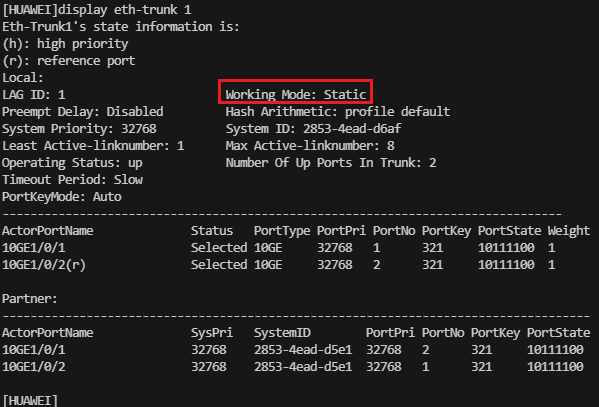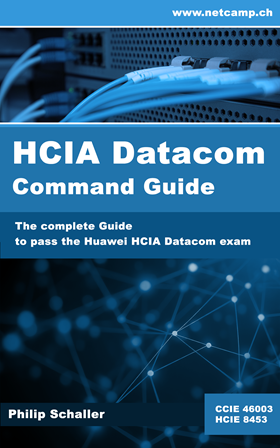You may also have wondered what the difference is between lacp-static and lacp-dynamic mode in the LACP configuration on a Huawei device. Here we take a look at the difference and what is used where.
Configuring an Etherchannel on a Huawei switch is easy by first creating a logical Eth trunk interface. Depending on the model, three configurations can be made using the mode command.

Let's take a look at the differences between the modes:
lacp-static: Link Aggregation Control Protocol Data Units (LACPDU) are exchanged between the two ends to negotiate the LACP parameters (e.g. which interfaces should be active and which inactive if a maximum number of interfaces is configured). If one end is not configured as LACP, the interfaces will be down and no data will be forwarded.
lacp-dynamic: As with lacp-static, LACPDUs are exchanged. However, if one end does not send an LACPDU or the negotiation fails, the interfaces are not going down, but the Eth-Trunk configuration is applied to both interfaces and they are connected as individual links. This means that even if there is a configuration error on one side, the links will still be up.
manual: No LACPDUs are exchanged here, but the interfaces are combined into an Eth-Trunk independently of the other side. This can be configured, for example, if devices do not support LACP. If nothing is configured, this is the default value.
The configured mode can be verified with the display eth-trunk 1 command.

Recommendation
The lacp-static mode should be used whenever possible. This provides the highest level of security against possible loops and requires correct configuration on both sides. There may be special requirements (e.g. ZTP) where the use of lacp-dynamic is justified, but lacp-static should be used whenever possible. The exception is devices that do not support LACP, but this is a standard and should be available on most devices today.
If you are interested in how a device calculates the distribution of packets on the physical links in an Etherchannel and how this can be configured, there is a separate guide How is the Eth-trunk load balancing calculated?.
➡️ The lacp-static and lacp-dynamic modes have nothing in common with the Cisco configuration channel-group mode active/passive.


